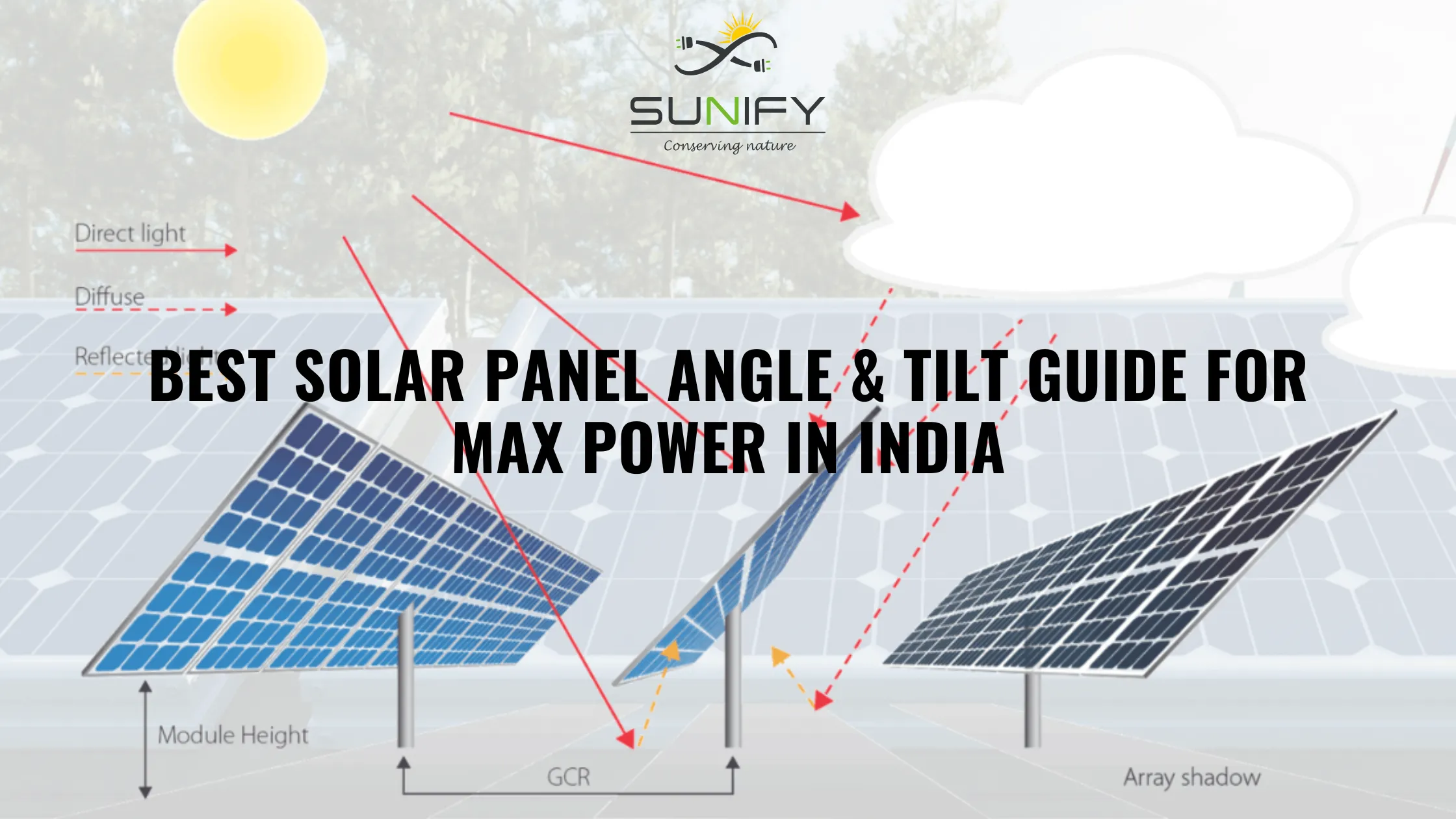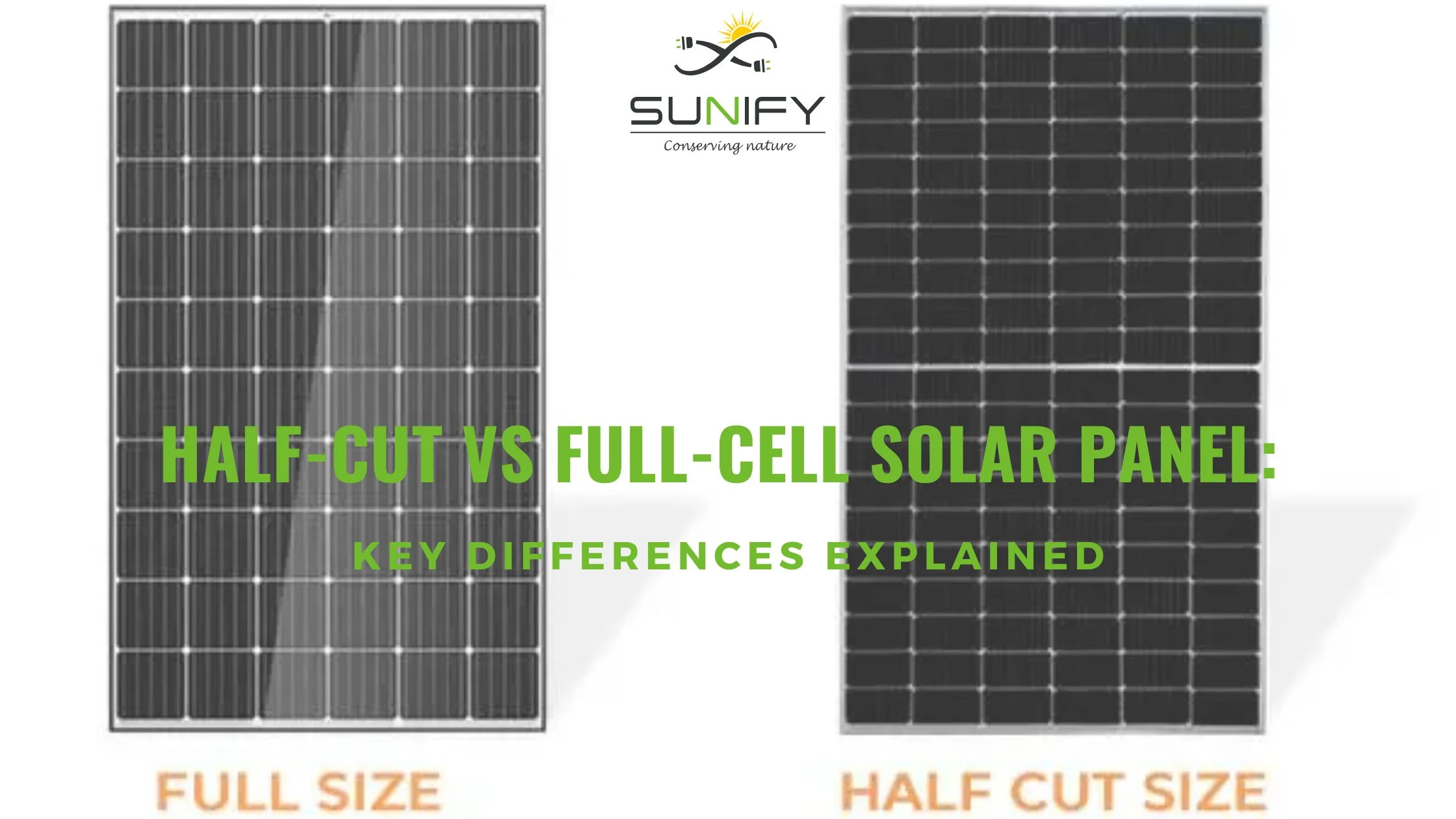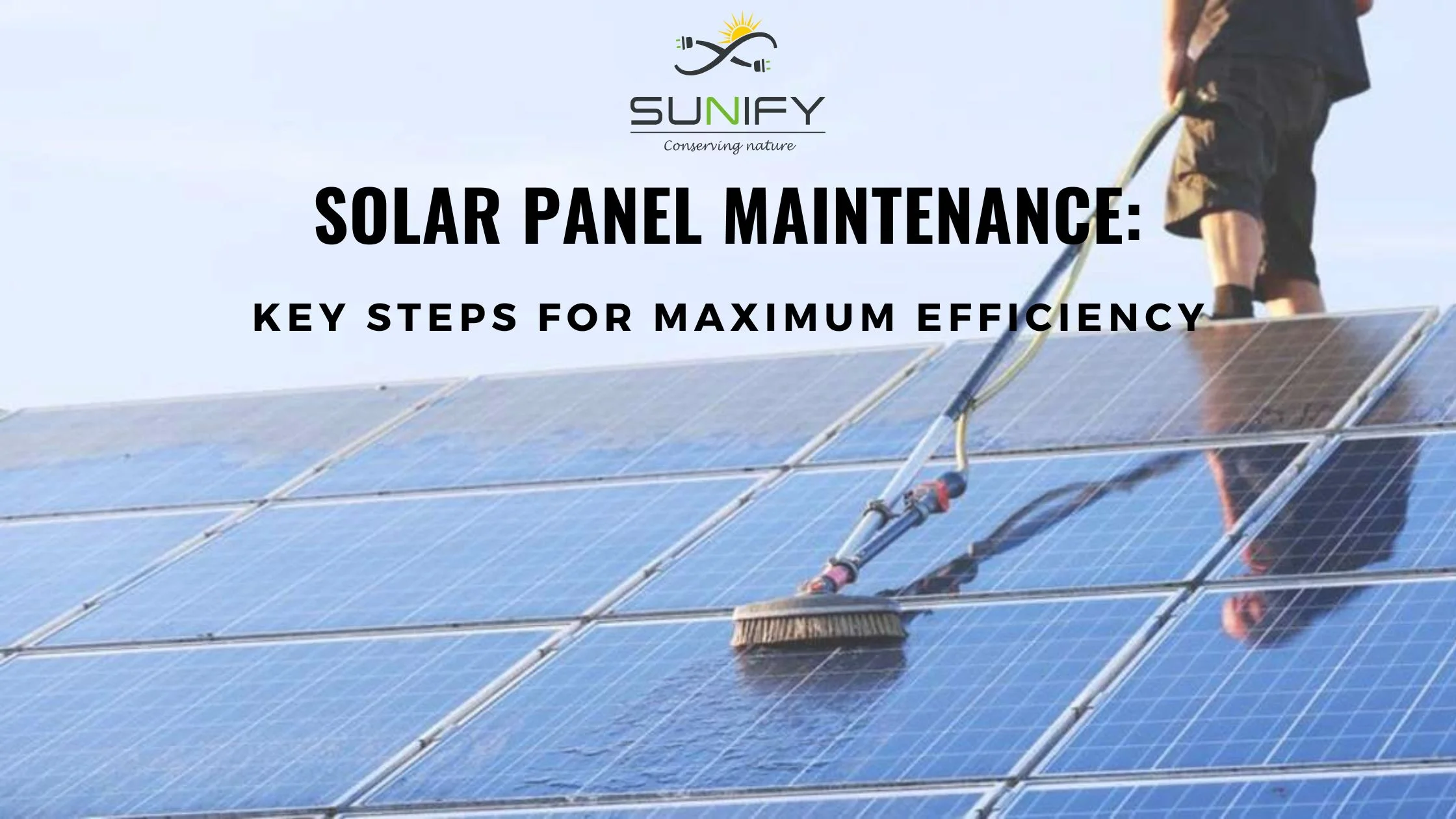
Connect With Our Team
Harnessing solar energy efficiently depends on more than just the quality of panels or the type of inverter you install. One of the most crucial, yet often overlooked, factors is the tilt angle and orientation of solar panels. In India, where sunlight is abundant for most of the year, installing solar panels at the right angle ensures that they absorb maximum sunlight, generate optimal electricity, and deliver the best return on investment.
In this comprehensive guide, we’ll explore the science behind solar panel tilt, the ideal angles for different Indian regions, seasonal adjustments, and practical tips for maximizing power output.
What Is Solar Panel Angle and Tilt?
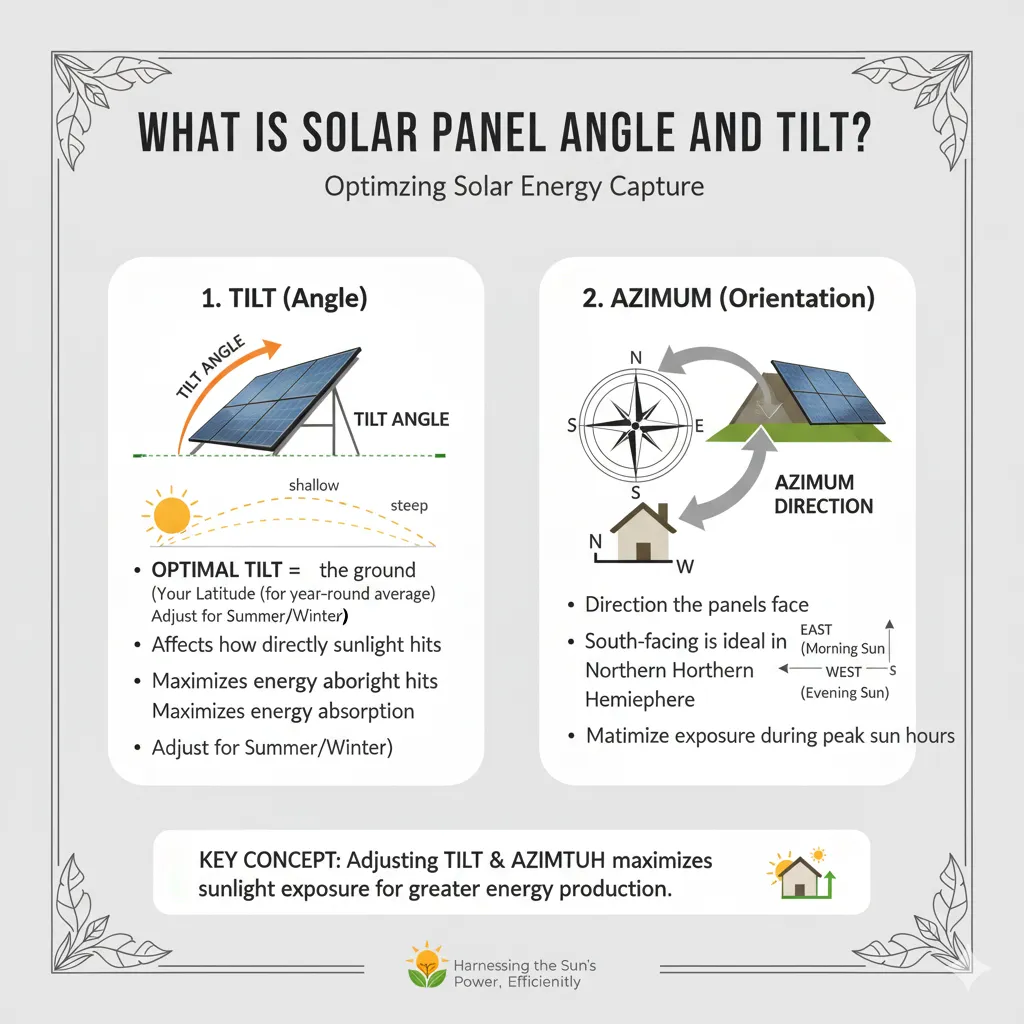
The solar panel angle refers to the tilt of the panel relative to the ground, while the solar panel tilt pertains to the panel's orientation towards the sun. Proper adjustment of both ensures that the panels capture the maximum amount of sunlight throughout the day.
Why Solar Panel Angle and Tilt Matter
Solar panels generate power by converting sunlight into electricity. The more sunlight that falls perpendicularly on the panel surface, the higher the energy output.
-
Tilt Angle: Refers to the angle between the solar panel and the ground.
-
Orientation: Refers to the direction the panels face.
Getting these right helps in:
-
Maximizing daily and annual energy production
-
Reducing dependency on external power sources
-
Increasing system efficiency and lifespan
-
Getting faster payback on your investment
In India, since we are located in the Northern Hemisphere, solar panels should ideally face true south to receive the most sunlight throughout the year.
Due to India’s large latitudinal span (~8°N to ~37°N), the sun’s path changes considerably. Panels in northern India see the sun lower in winter; in southern India, the sun is more overhead. This means a “one-size-fits-all” tilt angle won’t give maximum performance everywhere. Roof slope, local shading (from trees, buildings), wind loads, and typical weather (cloud cover or haze) also play roles.
How to Calculate the Best Solar Panel Tilt Angle
The golden rule:
Tilt Angle ≈ Latitude of your location
This is because the sun’s apparent position in the sky depends on latitude. By tilting your solar panels to match your latitude, you align them with the sun’s average path across the sky.
For example:
-
Delhi (Latitude ~28.6° N) → Ideal tilt ≈ 28°–30°
-
Mumbai (Latitude ~19.1° N) → Ideal tilt ≈ 19°–20°
-
Chennai (Latitude ~13° N) → Ideal tilt ≈ 13°–15°
Utilize the formula:
Optimal Tilt Angle = Latitude of Location ± 15°
Adjust the angle seasonally:
-
Winter: Add 15° to the latitude.
-
Summer: Subtract 15° from the latitude.
What Is the Best Solar Panel Angle in India by Region
Here are general guidelines for solar panel tilt angle depending on where you are:
|
Region |
Approximate Latitude |
Recommended Fixed Tilt Angle |
|---|---|---|
|
Southern India (e.g. Tamil Nadu, Kerala) |
~8–15° N |
~10–15° tilt works well year-round. |
|
Central India (e.g. Maharashtra, Madhya Pradesh) |
~18–24° N |
~20–25° tilt gives good balance. |
|
Northern India (e.g. Delhi, Punjab, Himachal Pradesh) |
~28–35° N |
~25–30° or even steeper (~30–35°) tilt in winter to capture lower sun. |
For example, in Delhi (latitude ~28.6° N), a tilt of about 28-30° is often recommended for fixed installations.
Seasonal Adjustments for Maximum Efficiency
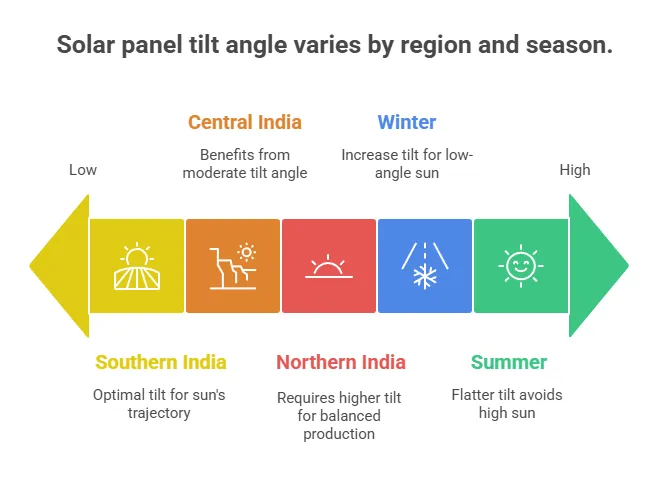
India experiences different sun angles in summer, monsoon, and winter. Adjusting the tilt seasonally can further increase output, though it may not be practical for all installations.
India's diverse geographical landscape necessitates region-specific adjustments:
-
Southern India: A tilt angle of approximately 10° is optimal, aligning with the sun's trajectory in this region.
-
Central India: Regions like Maharashtra benefit from a tilt angle of around 15°.
-
Northern India: Higher altitudes, such as in Delhi, require a tilt angle between 28° to 30° for balanced energy production.
Since the sun’s elevation changes with seasons, adjusting tilt for summer vs winter can improve yield:
-
In winter: increase tilt (steeper angle) so panels catch more of the low-angle sun.
-
In summer: flatter tilt helps avoid hitting the panels too much with high sun (which may help reduce overheating and losses).
For fixed installations, keeping panels at latitude angle works well year-round.
How to Pick the Right Tilt & Direction: Checklist
Here are things to check when planning solar panel installation:
-
Latitude of your location: baseline tilt.
-
Roof orientation: is it south-facing? If not, by how many degrees off?
-
Roof slope and structure: how steep is your roof now? Can you mount at a tilt different from roof slope?
-
Available space & shading: any trees, chimneys etc. casting shadows during peak sun hours?
-
Weather / seasonal considerations: having heavy rain, monsoon, or high wind may affect optimal tilt or require stronger mounts.
-
Budget & mount type: fixed vs adjustable tilt; the cost of adjustable mounting hardware vs gains in energy.
Rooftop Space and Tilt Considerations
When installing on rooftops, the tilt angle influences how much space your system will occupy. A steeper tilt requires more spacing between panel rows to avoid shadowing.
-
Flatter tilt (10°–15°): Saves space, ideal for compact rooftops.
-
Steeper tilt (30°–40°): Requires more space but gives higher output in winter months.
Tip: If your rooftop has limited space, choose lower tilt angles but ensure panels still receive good sunlight without shading.
Adjustable vs Fixed Tilt Systems
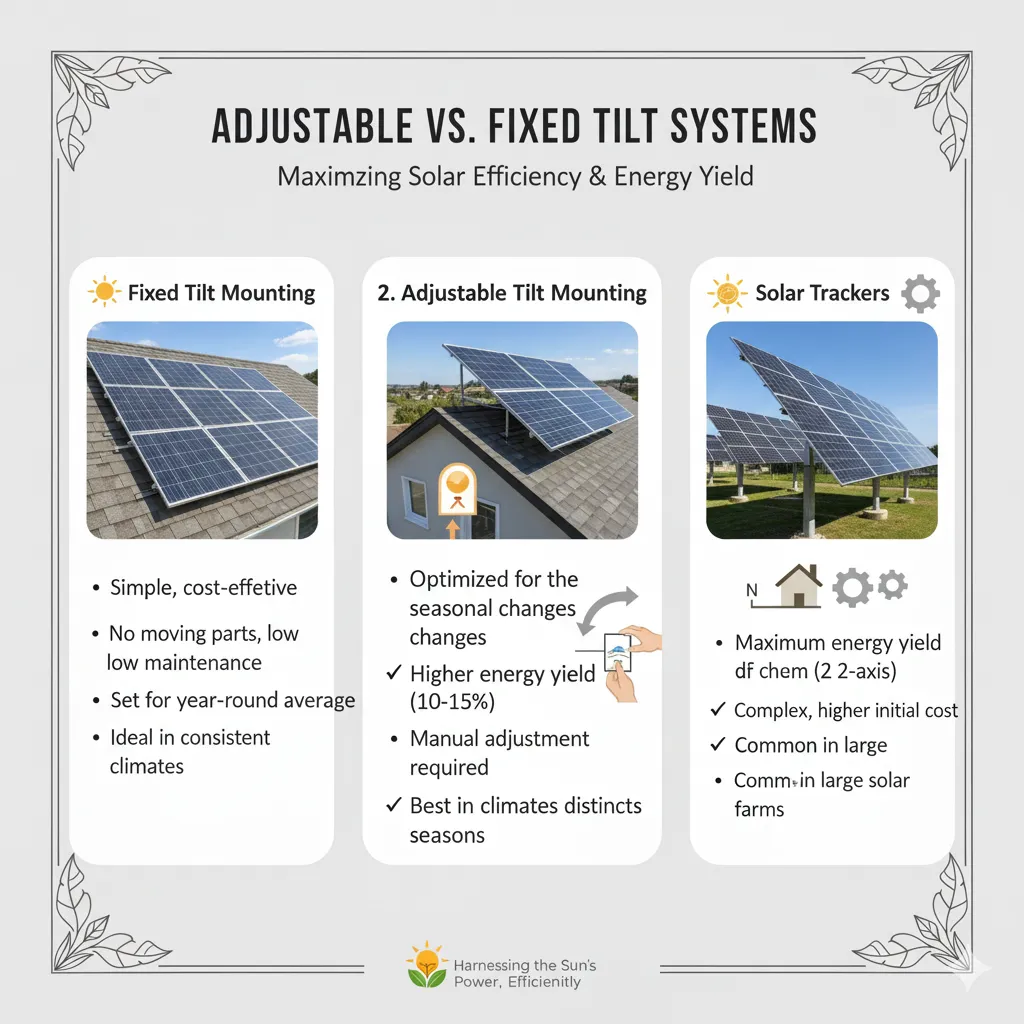
1. Fixed Tilt Mounting
-
Panels remain at one set angle.
-
Lower installation and maintenance costs.
-
Suitable for most residential rooftops.
2. Adjustable Tilt Mounting
-
Panels can be adjusted seasonally.
-
Increases yearly power output by 5–15%.
-
More suitable for ground-mounted systems or large commercial setups.
3. Solar Trackers
-
Panels move automatically to follow the sun’s path.
-
Can boost efficiency by up to 25–35%.
-
Higher upfront cost, mainly used in large-scale solar farms.
Factors That Affect the Ideal Solar Panel Angle in India
-
Geographic Location: Higher latitudes need steeper angles; lower latitudes need flatter ones.
-
Roof Design: Sloped roofs may naturally dictate panel tilt.
-
Shading: Trees, water tanks, or buildings can block sunlight at certain angles.
-
Purpose of Use: For self-consumption, aim for maximum daytime production; for grid feed-in, balance year-round generation.
-
Weather Conditions: In regions with heavy rainfall, steeper tilts help rainwater clean the panels naturally.
Practical Tips for Homeowners
-
Use your latitude as a baseline tilt.
-
Check shading with a solar pathfinder app before installation.
-
Opt for adjustable mounts if your budget and rooftop allow.
-
Ensure regular cleaning, a tilted panel allows dust and rain to slide off more easily.
-
Consult with solar installers who understand local weather conditions.
Why Proper Tilt Maximizes ROI
Solar panels are a long-term investment with a lifespan of 25+ years. Even a 5% drop in efficiency due to wrong tilt or orientation can result in significant energy and financial loss over time. By setting your panels at the correct angle, you ensure:
-
Higher daily output
-
Increased annual savings on electricity bills
-
Faster payback period
-
Reduced dependency on grid power
Conclusion
The best solar panel angle in India depends on your latitude, roof design, and energy needs. A simple rule of thumb is to set the tilt equal to your latitude, facing true south. For homeowners who want extra efficiency, adjusting tilt seasonally can add value, while commercial projects may benefit from solar tracking systems.
Whether you live in Delhi, Mumbai, or Chennai, optimizing your panel tilt ensures you make the most of India’s abundant sunshine. With the right angle, your solar system will not only generate maximum power but also accelerate your journey toward energy independence
Recently Posted
Whatsapp Chatx
Hi! Click one of our representatives below to chat on WhatsApp or send us email to solar@sunifysolar.in

|
************** +91 81414 55503 |

We will love to hear from you!


